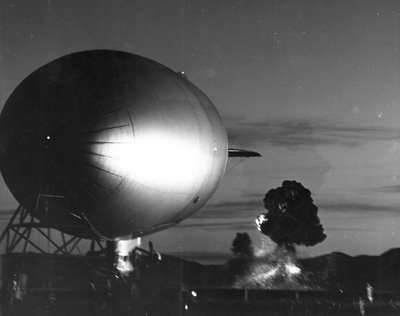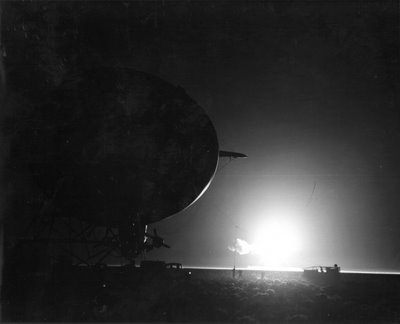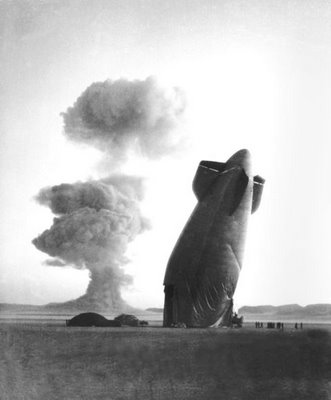Due to the extraordinary phenomenon that surrounds Vagina Dentata, it is unsurprising that the rare medical condition has spurned a wealth of myths. These vary from the ignorant, to the slightly distorted. Here we try to understand some of the myths surrounding Vagina Dentata, and share the facts behind the condition.I know, teeth in the vagina is an old joke - and I never thought I'd be reading something like this.
THE MYTHS
1. Vagina Dentata sufferers have the conscious desire to eat or castrate their partner during intercourse.
2. Queen Elizabeth I had Vagina Dentata and castrated Thomas Seymour, earning the moniker of the "Virgin Queen".
3. Vagina Dentata is a message from God, telling sufferers that they should be punished and not bear children.
THE FACTS
1. As well as being a classical mythological symbol of man's fear of castration, Vagina Dentata is an extremely rare medical condition that affects approximately 1 in 12 million women.
2. Despite "humorous" portrayals, toothed vaginas do not have a functioning jaw, therefore cannot bite. Nor are they able to speak.
3. Vagina Dentata is not hereditary, nor is it contagious or temporary. It is a genetic, permanent mutation of the vagina.
4. Teeth have also been known to exist in other un-natural body parts,including the womb, the brain and in unborn foetuses.
Apparently this vaginal teeth motif is in myths and stories and even jokes all over the world, showing up as a symbol of aggression in women, or of weapons that they can use to rape and kill men. In many of the stories, apparently the women marry the men who detoothed their vaginas and made them safe.
its hard to belive some thing like this..............
Showing posts with label history. Show all posts
Showing posts with label history. Show all posts
Monday, September 1, 2008
Friday, February 15, 2008
Nuclear tests on blimps
 On august 7, 1957, a U.S. Navy Blimp was pulled down by the shock wave from a nuclear blast at the Nevada Test Site. The blimp was in temporary free flight in excess of five miles from ground zero when collapsed. Navy personnel on the ground in the vicinity of the experimental area were unhurt.
On august 7, 1957, a U.S. Navy Blimp was pulled down by the shock wave from a nuclear blast at the Nevada Test Site. The blimp was in temporary free flight in excess of five miles from ground zero when collapsed. Navy personnel on the ground in the vicinity of the experimental area were unhurt.Operación Plumbbob was a series of nuclear tests conducted between May 28 and October 7, 1957 at Nevada desert. It was the biggest, longest, and most controversial test series in the continental United States. As part of the operation, some blimps were used to lift nuclar weapons or to test the shock wave effects on aircrafts. Here you are some amazing pictures of that era:





Photos courtesy of National Nuclear Security Administration / Nevada Site Office
Top 10 Best Spacewalks in History
 Extra-vehicular activity (EVA) is work done by an astronaut away from the Earth and outside of a spacecraft. The term most commonly applies to an EVA made outside a craft orbiting Earth (a spacewalk). As of September 13, 2006, 158 astronauts had made spacewalks (out of 448 astronauts ever in space). These are some of the most interesting moments in spacewalks history:
Extra-vehicular activity (EVA) is work done by an astronaut away from the Earth and outside of a spacecraft. The term most commonly applies to an EVA made outside a craft orbiting Earth (a spacewalk). As of September 13, 2006, 158 astronauts had made spacewalks (out of 448 astronauts ever in space). These are some of the most interesting moments in spacewalks history: 2. Ed White, the first American (june, 1965)
 On June 3, 1965, Edgard H. White became the first American to conduct a spacewalk. As pilot of Gemini 4, White stepped outside the spacecraft for a 21-min spacewalk during which he maneuvered on the end of a 7.6-m lifeline by using a hand-held jet gun.
On June 3, 1965, Edgard H. White became the first American to conduct a spacewalk. As pilot of Gemini 4, White stepped outside the spacecraft for a 21-min spacewalk during which he maneuvered on the end of a 7.6-m lifeline by using a hand-held jet gun.3. Bruce McCandless, floating free in space (1984)


 At about 100 meters from the cargo bay of the space shuttle Challenger, Bruce McCandless II was further out than anyone had ever been before. Guided by a Manned Maneuvering Unit (MMU), astronaut McCandless, pictured above, was floating free in space. McCandless and fellow NASA astronaut Robert Stewart were the first to experience such an "untethered space walk" during Space Shuttle mission 41-B in 1984. [1]
At about 100 meters from the cargo bay of the space shuttle Challenger, Bruce McCandless II was further out than anyone had ever been before. Guided by a Manned Maneuvering Unit (MMU), astronaut McCandless, pictured above, was floating free in space. McCandless and fellow NASA astronaut Robert Stewart were the first to experience such an "untethered space walk" during Space Shuttle mission 41-B in 1984. [1] 4. Mark C. Lee, testing EVA Rescue unit (1994)
 In 1994 astronaut Mark Lee tested the Simplified Aid for EVA Rescue (SAFER) system for NASA. SAFER is a backpack propulsion unit that incorporates small nitrogen thrusters controlled by hand and moderated by computer. Pictured, Lee jets about the bay of Space Shuttle Discovery, over 200 kilometers above Earth in the first untethered space walk in ten years. SAFER, smaller than the Manned Maneuvering Unit, is designed as a backup system to help astronauts in the unlikely event that they become too separated from their work outside the International Space Station. [1]
In 1994 astronaut Mark Lee tested the Simplified Aid for EVA Rescue (SAFER) system for NASA. SAFER is a backpack propulsion unit that incorporates small nitrogen thrusters controlled by hand and moderated by computer. Pictured, Lee jets about the bay of Space Shuttle Discovery, over 200 kilometers above Earth in the first untethered space walk in ten years. SAFER, smaller than the Manned Maneuvering Unit, is designed as a backup system to help astronauts in the unlikely event that they become too separated from their work outside the International Space Station. [1] 
5. Deep Space Spacewalkers (1971,72)
 August 5, 1971. On the return journey, while about 275,000 km from Earth, Alfred Worden went on a 41-minute spacewalk during which he was attached to the CSM by a tether – the most distant EVA up to that time. In the picture, astronaut Ronald Evans performs an EVA during the Apollo XVII on December 17, 1972. Evans made three trips to the Service Module's Scientific Instrument Module (SIM) bay to retrieve file cassettes in the last spacewalk in deep space to date. [1] [2]
August 5, 1971. On the return journey, while about 275,000 km from Earth, Alfred Worden went on a 41-minute spacewalk during which he was attached to the CSM by a tether – the most distant EVA up to that time. In the picture, astronaut Ronald Evans performs an EVA during the Apollo XVII on December 17, 1972. Evans made three trips to the Service Module's Scientific Instrument Module (SIM) bay to retrieve file cassettes in the last spacewalk in deep space to date. [1] [2] 6. First spacewalk from the Shuttle (1983)
 Astronauts Musgrave and Peterson on the first spacewalk from the Shuttle, 1983. During the mission, both astronauts tested EVA equipment as well as construction and repair devices and procedures. [1]
Astronauts Musgrave and Peterson on the first spacewalk from the Shuttle, 1983. During the mission, both astronauts tested EVA equipment as well as construction and repair devices and procedures. [1] 
7. Intelsat VI Satelite Rescue (1992)
 May, 1993. Three crewmembers of mission STS-49 hold onto the 4.5 ton International Telecommunications Organization Satellite (INTELSAT) VI after a six- handed "capture" was made minutes earlier during the mission's third extravehicular activity (EVA). From left to right: Richard J. Hieb, Thomas D. Akers and Pierre J. Thuot. [1]
May, 1993. Three crewmembers of mission STS-49 hold onto the 4.5 ton International Telecommunications Organization Satellite (INTELSAT) VI after a six- handed "capture" was made minutes earlier during the mission's third extravehicular activity (EVA). From left to right: Richard J. Hieb, Thomas D. Akers and Pierre J. Thuot. [1] 
8. Spacewalks on the robotic arm
Spacewalkers often work strapped to the tip of the shuttle's 50-foot robotic arm. The large robot arm attached to the Space Shuttle Orbiter was designed, and built by a Canadian company, and so is also known as Canadarm. It is 15.3 m long and weighs 408 kg. As part of the Remote Manipulator System (RMS) it can retrieve, repair and deploy satellites, or provide a mobile extension ladder for spacewalking crewmembers. The arm has been supporting astronauts working in space for a long time, so these are some of the most interesting pictures:
 Jerry L. Ross, anchored to the robotic arm of the Atlantis. [1]
Jerry L. Ross, anchored to the robotic arm of the Atlantis. [1]  Mark C. Lee and Carl Meade on Discovery shuttle, 1994. [1]
Mark C. Lee and Carl Meade on Discovery shuttle, 1994. [1]  Stephen K. Robinson, Discovery, August 8, 2005. [1]
Stephen K. Robinson, Discovery, August 8, 2005. [1]  Wisoff and Low, Endeavour, december 1993. [1]
Wisoff and Low, Endeavour, december 1993. [1]  Michael Gernhardt, Endeavour robotic arm. [1]
Michael Gernhardt, Endeavour robotic arm. [1]  Peter J.K. Wisoff, december 2003. [1]
Peter J.K. Wisoff, december 2003. [1]  David Wolf testing EVARM, october 10, 2002. [1]
David Wolf testing EVARM, october 10, 2002. [1]  Bruce McCandless over Canadarm, february, 1984. [1]
Bruce McCandless over Canadarm, february, 1984. [1] Satellites "for sale"
 November 14, 1984. Astronaut Dale A. Gardner holds up a "For Sale" sign refering to the two satellites, Palapa B-2 and Westar 6 that they retrieved from orbit after their Payload Assist Modules (PAM) failed to fire. [1]
November 14, 1984. Astronaut Dale A. Gardner holds up a "For Sale" sign refering to the two satellites, Palapa B-2 and Westar 6 that they retrieved from orbit after their Payload Assist Modules (PAM) failed to fire. [1] 9. Hubble Repair Missions
 The Hubble Space Telescope (HST) is a telescope in orbit around the Earth and the only telescope ever designed to be serviced from space by astronauts. To date, there have been four servicing missions, with a fifth and final mission planned for September 2008. [1] [2]
The Hubble Space Telescope (HST) is a telescope in orbit around the Earth and the only telescope ever designed to be serviced from space by astronauts. To date, there have been four servicing missions, with a fifth and final mission planned for September 2008. [1] [2]  Astronaut F. Story Musgrave, anchored on the end of the Remote Manipulator System (RMS) arm, prepares to be elevated to the top of the Hubble Space Telescope (HST) to install protective covers on the magnetometers. [1]
Astronaut F. Story Musgrave, anchored on the end of the Remote Manipulator System (RMS) arm, prepares to be elevated to the top of the Hubble Space Telescope (HST) to install protective covers on the magnetometers. [1] 10. International Space Station assembly
 The International Space Station (ISS) is a research facility currently being assembled in space. It travels at an average speed of 27,744 km (17,240 miles) per hour, completing 15.7 orbits per day. Since 1998, astronauts have worked hard completing the station. In the picture above, International Space Station assembly EVA made during the STS-116 spaceflight by astronauts Robert Curbeam and Christer Fuglesang as they fly over New Zealand. [1]
The International Space Station (ISS) is a research facility currently being assembled in space. It travels at an average speed of 27,744 km (17,240 miles) per hour, completing 15.7 orbits per day. Since 1998, astronauts have worked hard completing the station. In the picture above, International Space Station assembly EVA made during the STS-116 spaceflight by astronauts Robert Curbeam and Christer Fuglesang as they fly over New Zealand. [1] 

 April 13, 2002. Anchored on the International Space Station’s (ISS) Canadarm2 some 240 miles above the blue and white Earth, astronaut Lee M.E. Morin totes one of the S0 (S-zero) keel pins, which were removed from their functional position on the truss and attached on to its exterior for long-term stowage. [1]
April 13, 2002. Anchored on the International Space Station’s (ISS) Canadarm2 some 240 miles above the blue and white Earth, astronaut Lee M.E. Morin totes one of the S0 (S-zero) keel pins, which were removed from their functional position on the truss and attached on to its exterior for long-term stowage. [1]  Astronaut Piers Sellers working on ISS.
Astronaut Piers Sellers working on ISS. And here you can see two videos of the ISS works, simply amazing:
Subscribe to:
Posts (Atom)



